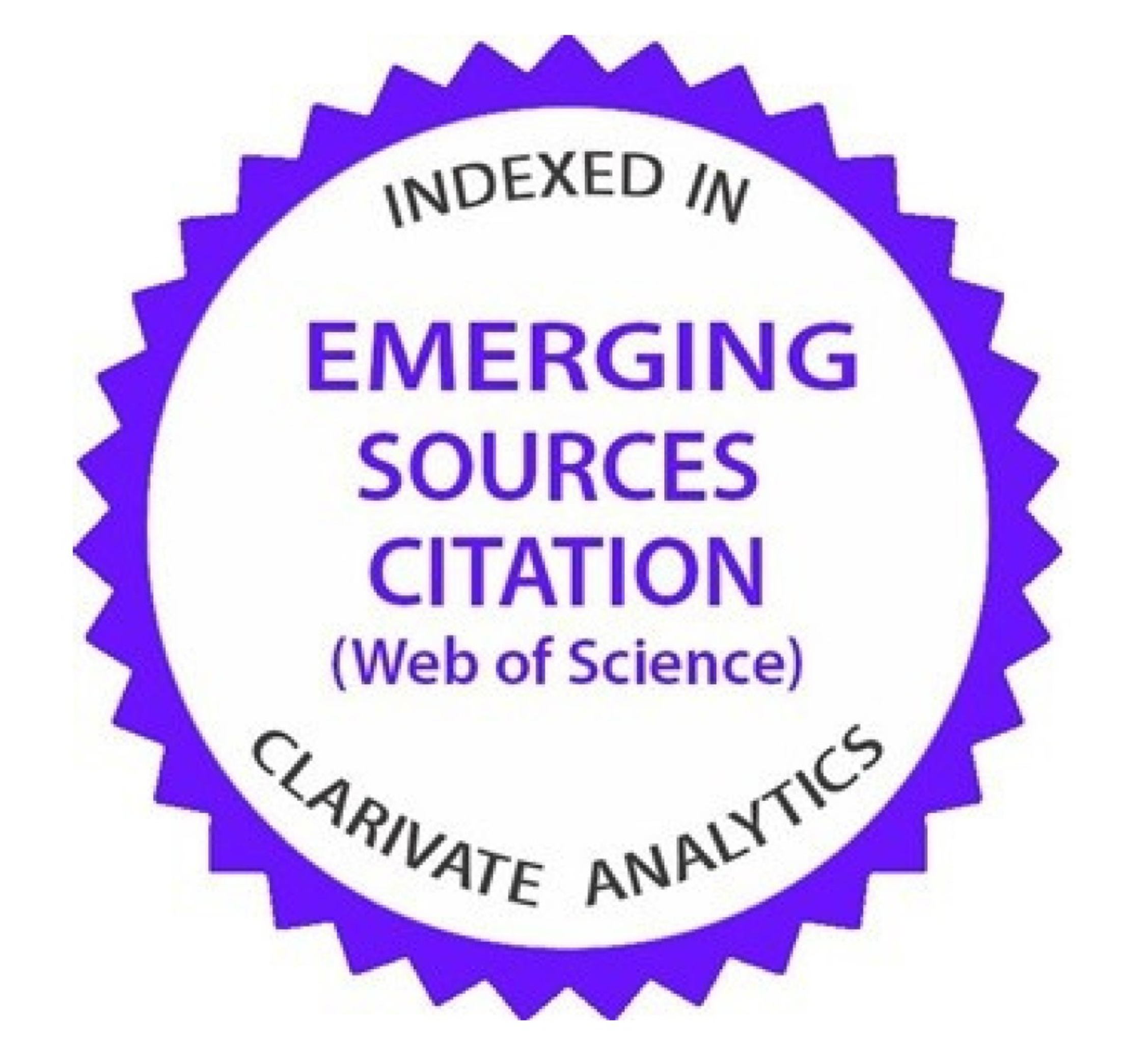Comparison of e-government acceleration in five regions: Case studies following the issuance of Presidential Regulation 95/2018
Downloads
One year following the issuance of Presidential Regulation Number 95 of 2018 (Perpres 95/2018), all local governments are competing to implement an electronic-based government system (SPBE/e-Government/eGov). This study, which was conducted in the 2021-2022 period, aimed to examine e-Gov planning and then compare its practice in the five regions (Surabaya, Banyuwangi, Sleman, Gresik, and Kulon Progo) focusing on the results of the 2019 SPBE evaluation and the availability of a legal umbrella in the form of Regent/Mayor Regulations governing the implementation of e-Gov. Starting with the e-Gov theoretical framework, this study used a qualitative-descriptive method with internet secondary data, library research, SPBE index review, and supporting documents. The results of this study are: (a) there are four phases of e-Gov planning: automation, optimization, reengineering, and transformation. The acceleration of the implementation of the SPBE includes the integration of planning, budgeting, procurement, personnel data, archives, public complaints, and data centers; (b) responsively, the five regions compared in this study already have a legal umbrella in the form of a Regent/Mayor Regulations one year following the issuance of Presidential Decree 95/2018; (c) The SPBE service domain is a reliable indicator among the five regions, while the SPBE governance and policy domain displays different dynamics among them. This study concludes that Indonesia's performance in e-Gov practice is still not convincing among other countries globally and recommends more innovative implementation of e-Gov from authorities (government) without neglecting periodic evaluations.
Alexopoulos C, Zuiderwijk A, Charapabidis Y, Loukis E, & Janssen M (2014) Designing a second generation of open data platforms: Integrating open data and social media. In: Electronic Government: 13th IFIP WG 8.5 International Conference, September 1-3, Dublin, Ireland. Proceedings 13. Springer Berlin Heidelberg. Berlin: Electronic Government. 230-241. https://doi.org/10.1007/978-3-662-44426-9_19.
Andersen KV & Henriksen HZ (2006) E-government maturity models: Extension of the Layne and Lee model. Government Information Quarterly 23 (2):236-248. https://doi.org/10.1016/j.giq.2005.11.008.
Chadwick A (2016) E-government. Encyclopedia Britannica, 24 November. [Accessed 5 Oktober 2021]. https://www.britannica.com/topic/e-government.
Commission of The European Communities (2003) Communication from the commission to the council, the European parliament, the European economic and social committee and the committee of the regions. Brussels, 26.9.2003 COM(2003) 567 final. https://eur-lex.europa.eu/LexUriServ/LexUriServ.do?uri=COM:2003:0567:FIN:EN:PDF.
Creswell JW (2002) Research Design: Qualitative & Quantitative Approaches. translation: Batch III & IV KIK-UI and in collaboration with Khabibah N. Jakarta: KIK Press Publisher. 138.
Dewan Teknologi Informasi dan Komunikasi Nasional (2018) Policy paper/policy brief: Pengembangan digital government (tahun anggaran 2018). Dewan Teknologi Informasi dan Komunikasi Nasional. [Accessed 18 Oktober 2021]. http://www.wantiknas.go.id/wantiknas-storage/file/img/kajian/POLICY%20PAPER%203%20-%20Digital%20Government.pdf.
Pinto HDS, Bernardini F, & Viterbo J (2018) How cities categorize datasets in their open data portals: An exploratory analysis. In: Proceedings of the 19th Annual International Conference on Digital Government Research: Governance in the Data Age, May. 1-9. https://doi.org/10.1145/3209281.3209377.
Fuchs C (2018) Critical, digital and social media studies. In: Morelock J (ed). Critical Theory and Authoritarian Populism. London: University of Westminster Press. 157-206. http://library.oapen.org/handle/20.500.12657/26034.
Gebre EH & Morales E (2020) How "accessible” is open data?: Analysis of context-related information and users' comments in open datasets. Information and Learning Science 121 (1):19-36. https://doi.org/10.1108/ILS-08-2019-0086.
Gil-Garcia JR (2012) Enacting Electronic Government Success: An Integrative Study of Governmentwide Websites,Organizational Capabilities, and Institutions. New York: Springer: 2-5.
Grönlund í… & Horan TA (2005) Introducing e-gov: History, definitions, and issues. Communications of the association for information systems 15 (1):39. https://doi.org/10.17705/1CAIS.01539.
Hansson K, Belkacem K, & Ekenberg L (2015) Open government and democracy: A research review. Social Science Computer Review 33 (5):540-555. https://doi.org/10.1177/0894439314560847.
Hesse-Biber SN & Leavy P (ed) (2008) Handbook of Emergent Methods. New York: Guilford Press. http://repository.umpwr.ac.id:8080/bitstream/handle/123456789/187/Handbook%20of%20Emergent%20Methods.pdf?sequence=1.
Huda M & Yunas NS (2016) The development of e-government system in Indonesia. Jurnal Bina Praja 8 (1):97-108. https://doi.org/10.21787/jbp.08.2016.97-108.
Irawan B & Nizar HM (2021) E-government: Konsep, Esensi dan Studi Kasus. Samarinda: Mulawarman University Press. https://repository.unmul.ac.id/bitstream/handle/123456789/15689/Unesco_EGovernment.pdf?sequence=1.
Janssen M, Charalabidis Y, & Zuiderwijk A (2012) Benefits, adoption barriers and myths of open data and open government. Information Systems Management 29 (4):258-268. https://doi.org/10.1080/10580530.2012.716740.
Pradipta RF (2021) Satu data Indonesia sebagai entry point reformasi struktural di bidang Teknologi Informasi dan Komunikasi (TIK). Kementerian Keuangan Direktorat Jenderal Anggaran. [Accessed 10 September 2022]. https://anggaran.kemenkeu.go.id/in/post/satu-data-indonesiasebagai-entry-point-reformasi-struktural-di-bidangteknologi-informasi-dan-komunikasi-tik.
Kominfo Direktorat Jenderal Aplikasi Informatika (2020) Penerapan SPBE dan rencana pembangunan pusat data nasional. Kominfo Direktorat Jenderal Aplikasi Informatika. [Accessed 15 September 2022]. https://aptika.kominfo.go.id/2020/10/penerapan-spbe-dan-rencana-pembangunan-pusatdata-nasional/.
Layne K & Lee J (2001) Developing fully functional E-government: A four stage model. Government Information Quarterly 18 (2):122-136. https://doi.org/10.1016/S0740-624X(01)00066-1.
Lourenço RP (2015) An analysis of open government portals: A perspective of transparency for accountability. Government Information Quarterly 32 (3):323-332. https://doi.org/10.1016/j.giq.2015.05.006.
Masyhur (2017) Penelitian e-government di Indonesia: Studi literatur sistematis dari perspektif dimensi pemeringkatan e-government Indonesia (PeGI). IPTEK-KOM (Jurnal Ilmu Pengetahuan dan Teknologi Komunikasi) 19 (1):51-62. https://doi.org/10.33164/iptekkom.19.1.2017.51-62.
Manoharan AP, Melitski J, & Holzer M (2022) Digital governance: an assessment of performance and best practices. Public Organization Review 23 (1):265-283. https://doi.org/10.1007/s11115-021-00584-8.
Mellouli S, Luna-Reyes LF, & Zhang J (2014) Smart government, citizen participation and open data. Information Polity 19 (1):1-4. https://doi.org/10.3233/IP-140334.
Moon MJ (2002) The evolution of e-government among municipalities: Rhetoric or reality? Public Administration Review 62 (4):424-433. https://doi.org/10.1111/0033-3352.00196.
Moon MJ (2018) Evolution of co-production in the information age: Crowdsourcing as a model of webbased co-production in Korea. Policy and Society 37 (3):294-309. https://doi.org/10.1080/14494035.2017.1376475.
Nurdin AHM (2018) Menuju pemerintahan terbuka (open government) melalui penerapan e-government. Jurnal MP (Manajemen Pemerintahan) 5 (1):1-17.
Purwanto A, Zuiderwijk A, & Janssen M (2020) Citizen engagement with open government data: lessons learned from Indonesia's presidential election. Transforming Government: People, Process and Policy 14 (1):1-30. https://doi.org/10.1108/TG-06-2019-0051.
Saez Martín A, Rosario AHD, & Pérez MCDCC (2015) An international analysis of the quality of open government data portals. Social science computer review 34 (3):298-311. https://doi.org/10.1177/0894439315585734.
Safarov I, Meijer A, & Grimmelikhuijsen S (2017) Utilization of open government data: a systematic literature review of types, conditions, effects and users. Information Polity 22: 1-24. https://doi.org/10.3233/IP-160012.
Salsabila L & Purnomo EP (2018) Establishing and implementing good practices e- government (A case study: Indonesia and South Korea e- government implementation 2012-2016). Journal of Asian Review of Public Affairs and Policy 3 (3):36-54. https://bit.ly/40FJgB7.
Simonofski A, Zuiderwijk A, Clarinval A, & Hammedi W (2022) Tailoring open government data portals for lay citizens: A gamification theory approach. International Journal of Information Management 65 (102511). https://doi.org/10.1016/j.ijinfomgt.2022.102511.
SPBE (2021) Hasil evaluasi SPBE 2019. [Accessed 7 Oktober 2021]. https://www.spbe.go.id/.
Tohirin (2014) Korea's experiences learning good governance and e-government. Pusdiklat Anggaran dan Perbendaharaan, 22 Desember. [Accessed 10 Oktober 2022]. https://bppk.kemenkeu.go.id/pusdiklat-anggaran-dan-perbendaharaan/berita/koreas-experiences-learning-good-governanceand-e-government-810726.
UN E-Government Knowledgebase (2020) Data country-information year 2020. https://publicadministration.un.org/egovkb/en-us/Data/Country-Information/id/78-Indonesia/dataYear/2020.
UN E-Government Knowledgebase (2022) UN E-Government Survey 2022: The Future of Digital Government. Department of Economic and Social Affairs. New York: UNITED NATIONS. [Accessed 8 November 2022]. https://publicadministration.un.org/egovkb/en-us/.
Waseda University Institute of Digital Government (2022) Digital Government Rangkings. [Accessed 10 November 2022] https://idg-waseda.jp/ranking.htm.
Yusuf M, Adams C, & Dingley K (2016) A review of e-government research as a mature discipline : Trends, themes, philosophies, methodologies, and methods. The Electronic Journal of E-Government (EJEG) 14 (1):18-35. https://academic-publishing.org/index.php/ejeg/article/view/626.
Zuiderwijk A, Janssen M, & Dwivedi YK (2015) Acceptance and use predictors of open data technologies: drawing upon the unified theory of acceptance and use of technology. Government Information Quarterly 32 (4):429-440. https://doi.org/10.1016/j.giq.2015.09.005.

This work is licensed under a Creative Commons Attribution-NonCommercial-ShareAlike 4.0 International License.
Copyright of this journal is possession of Editorial Board and Journal Manager, by the knowledge of the author, while the moral right of the publication belongs to the author.
The formal legal aspect of journal publication accessibility refers to Creative Commons Attribution-NonCommercial-ShareAlike (CC BY-NC-SA), implies that publication can be used for non-commercial purposes in its original form (cannot be modified).
Every publication (printed/electronic) are open access for educational purposes, research, and library. Other than the aims mentioned above, the editorial board is not responsible for copyright violation.
















